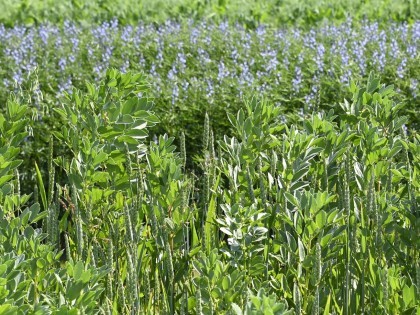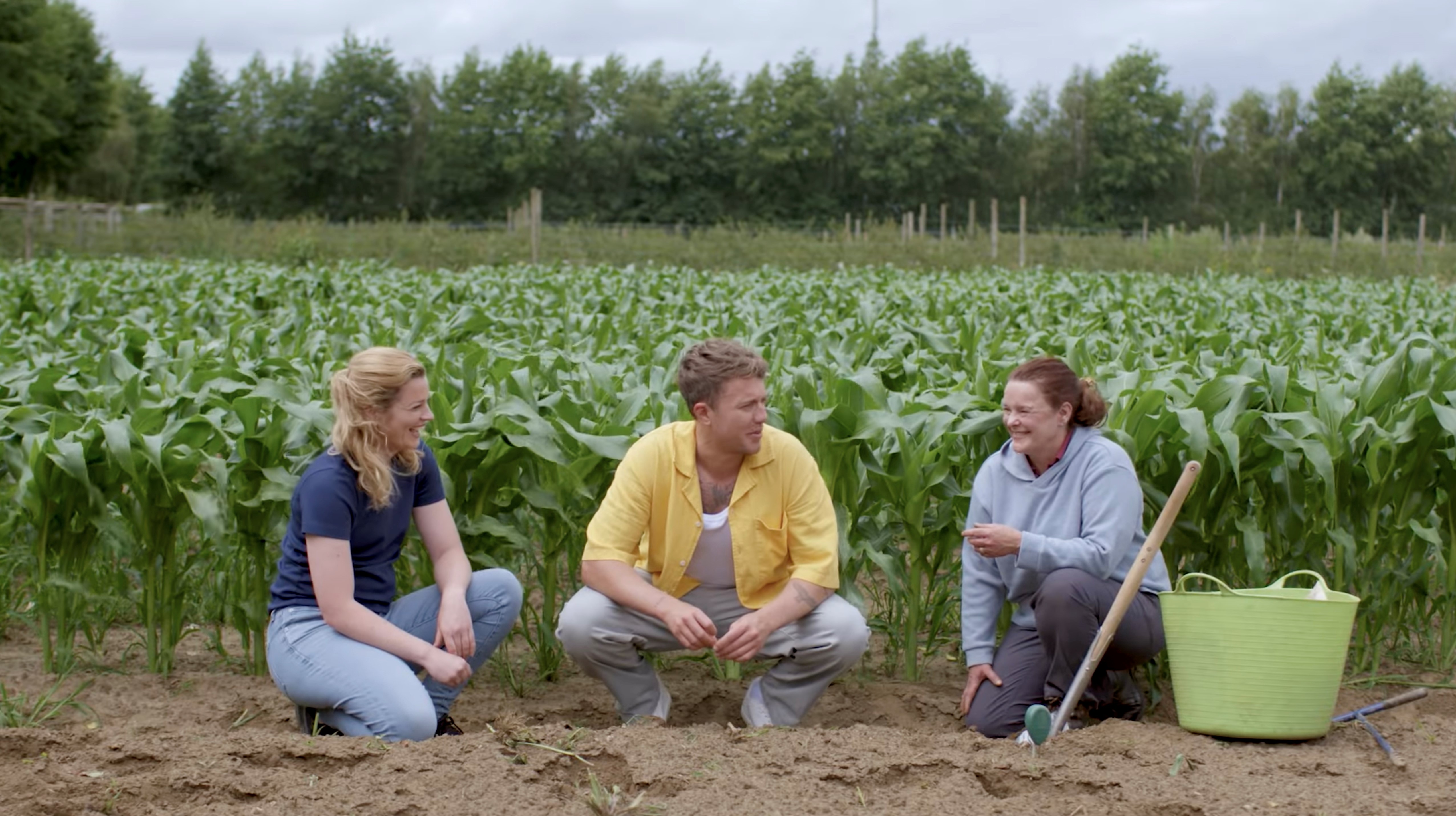
In his introduction for to the Autumn Edition 2023 (no 53) of NIAB Landmark, NIAB CEO Professor Mario Caccamo discusses if regeneration agriculture is hype or hope...
Major food and drink producers, retailers, NGOs and even high street banks are moving rapidly and in serious numbers to embrace regenerative agriculture as the solution to a more environmentally responsible approach to farming, with associated benefits for improving soil and water quality, enhancing biodiversity, reducing synthetic input use and conserving precious natural resources.
A year on since our Landmark issue (no 50) devoted to the topic of regenerative farming, it is great to see how much the term is in everyone’s mouth: it is mainstream. Some of the large food companies are making similar pledges about their commitment to use foodstuffs produced by growers following regenerative farming principles.
There has been much debate of late about what regenerative agriculture really means. The lack of clear definitions has led some to suggest that it is simply greenwash. Questions also persist over whether the economics of regenerative agriculture stack up at the farm level and, at a time of mounting concern over the impact of climate change and war in Ukraine on global food prices and security of supply, what impact a large scale switch to regen-ag practices would have on our domestic food production capacity without bringing more land into production.
Trials at Rothamsted Research since 2017, for example, involving 24 different cropping systems combining a variety of regen-ag practices have so far shown that, in the short-term, reduced tillage invariably results in lower crop yields, and that sophisticated soil management strategies alone cannot be viewed as the short-term fix for more sustainable food production.
As we mourn the recent passing of Dr MS Swaminathan, one of the fathers of the Green Revolution, it is important we reflect on the successes of agriculture. In the past five decades the global population has doubled to reach the iconic eight billion figure in November last year.
About 10% of the world population will go to bed hungry today: this is unacceptable. But if we go back to the time when Borlaug, Swaminathan and other colleagues set the basis for the great leap in agriculture productivity that resulted in the Green Revolution, that figure would have been 30%. Not only have we managed to keep up with massive population growth, but we also reduced hunger and extended life expectancy at a remarkable pace.

NIAB's Head of Farming Systems Dr Elizabeth Stockdale features in a short film from McCain UK on the positive role of regenerative agriculture in food production.
As we are facing the challenges of climate change and the requirements to grow crops that are healthier, environmentally friendlier and profitable, the question we should ask is: can we sustainably intensify the way we produce food? The technologies and strategies behind soil restoration and regenerative farming stand at the intersection of these challenges.
One of the strengths of regenerative farming is its lack of prescription, and flexibility, provided its guiding principles are observed. These guiding principles are founded on well-established farming practices, many of which have been studied by NIAB as part of our applied agronomy research programmes for many years, for example in terms of longer, more diverse rotations, use of cover crops, minimum and no till cultivation systems, and improvement of soil health.
Many progressive NIAB members I have spoken to about their experiences with introducing regenerative farming practices on a commercial basis are adamant that they need that flexibility, and all the tools in the toolbox such as glyphosate to control weeds, or novel genetics to increase productivity while reducing dependence on chemical pesticides and fertilisers.
But while the success of regenerative farming may lie in its flexibility, and the diverse range of ways in which its guiding principles can be delivered, there remains a lack of commercial-scale data to inform best practice – in other words a lack of independent science which will incentivise farmers to adopt soil restoration production practices, allow the industry to demonstrate its sustainability credentials to value chain partners, and to communicate with consumers the benefits that come from a more science-based approach to agricultural production.
As former Teagasc director Professor Gerry Boyle observed recently: “..fluffy claims are not enough, and robust scientific data is needed to assess the power of regenerative agriculture.”
In short, there is a need to provide the science which can scale-up and underpin the credibility of regenerative farming systems, based on a recognition that practices focused on increasing soil organic matter, avoiding erosion, and reducing disturbance to the soil are entirely compatible with sustainable intensification and precision agriculture.
What is NIAB's vision?
NIAB’s vision of regenerative farming is that it shares with sustainable intensification and precision agriculture the aim of optimising productivity – producing more from less – while at the same time protecting and improving the condition of the land and surrounding environment. This is also reflected in the focus on lowland peat farming in the Autumn 2023 issue of Landmark and the work NIAB and other organisations are doing in the restoration and future management of these landscapes that contribute so much to UK food production, while enhancing biodiversity and reducing carbon emissions.
In that sense regenerative agriculture is neither hype or hope, but just a sensible way of farming that should be supported by solid evidence-based science.
That’s why NIAB is preparing the ground for a major research effort focused on delivering the science behind regenerative agriculture, building on our independence and research leadership in soil science, variety testing, rotational agronomy, precision agronomy, cover cropping, data science and water use efficiency.
NIAB’s objective for this ambitious programme is not only to be the go to place for independent advice on issues such as variety selection, cover crops, rotations and agronomy, but also to develop the metrics by which the sustainability of regenerative agriculture practices – in terms of resource use and environmental impact – can be benchmarked and monitored over time.
This outcomes-focused approach to data collection and assimilation will be essential not only to understand and drive best practice at farm level, but also to provide information to customers and ultimately consumers about the comparative sustainability impact of each unit of food produced, whether that is a loaf of bread, a punnet of strawberries, or a bag of potatoes.
We also plan to integrate regen-ag objectives into our genetics and pre breeding activities, for example by improving the performance and viability of N-fixing pulse cropping options, investigating novel crop opportunities, and even exploring the potential for cover crops to become an additional source of revenue within the rotation, as is already happening in the United States with the development of gene edited CovercressTM as a source of high value oil and animal feed.
We are confident that a progressive, science-based approach to regen-ag, embracing innovation and harnessing the power of large-scale data, offers the potential for high-yielding, profitable crop production to go hand in hand with reducing agriculture’s environmental and climate impacts.
This article originally appeared in the Autumn 2023 edition of NIAB’s Landmark magazine. Landmark features in-depth technical articles on all aspects of NIAB crop research, comment and advice. You can sign up for free and get Landmark delivered to your door or inbox:
